7 Hair Gloss Before-and-After Pictures That Will Have You Booking an Appointment ASAP
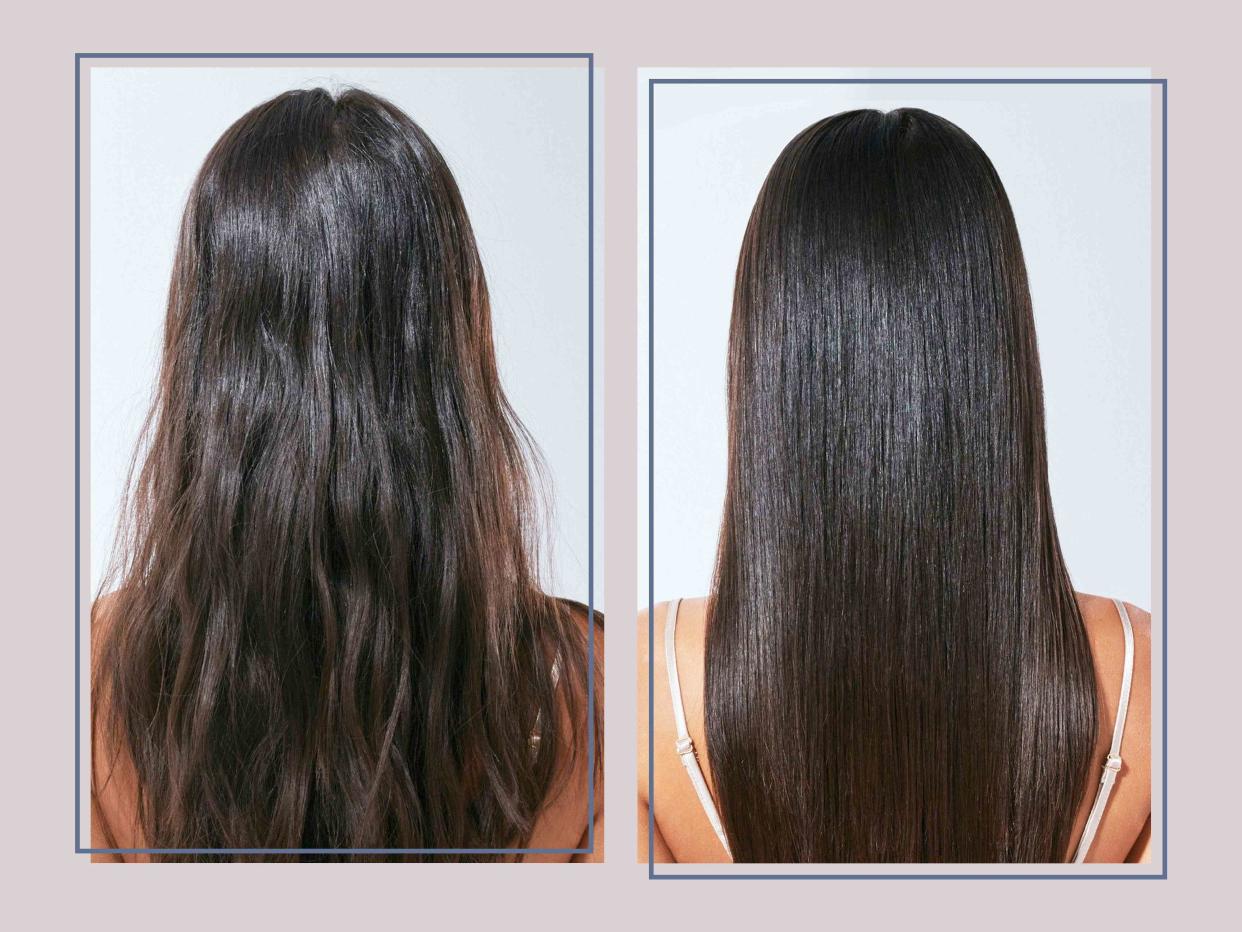
Ouai
Looking at me, you’d likely never guess that my red hair isn’t natural. I have a pale complexion dotted with freckles, making the vibrant color of my strands entirely believable. It’s something I’ve been told time and time again. I walk into a salon, they ask me my name, scan over what my appointment is for, and marvel over my mane, inquiring just how long I’ve gone red, shocked that it’s bottle-bred. My secret? A combination of all-over color once or twice a year with root touch-ups and glosses in between. Today, we’re here to talk about the latter.
While many people assume hair glosses to be in-salon and at-home treatments geared solely toward shiny strands, in reality, they boost color vibrancy, too. Intrigued? Keep reading to learn everything there is to know about hair gloss treatments, including whether or not it’s right for you and your hair goals.
What Is Hair Gloss?
According to celebrity colorist and IGK Hair Care co-founder Chase Kusero, a hair gloss is a semi-permanent treatment designed to enhance natural and color-treated hair. “It works by sealing the cuticles and adding a lustrous shine,” he says. “Unlike hair dye, it's more about boosting the hair's existing color and adding a reflective sheen.”
In that way, Oribe stylist and educator Adam Livermore says that hair glosses do for your hair what lip glosses do for your lips. “They impart a lot of shine, and they can be clear or impart a translucent color that overlays the color of what you're applying it to,” he explains. “We can use hair glosses to juice up hair color, or tone it down, or just use a clear one for shine and protection.”
The Benefits of Hair Gloss Treatments
According to Kusero, hair gloss treatments are beneficial for all hair types. “They enhance shine, refresh color, smooth the hair, and can even reduce frizz,” he says. “Regular glossing can help maintain the vibrancy of color-treated hair and add depth to natural hair color.” Madison Reed master colorist Shvonne Perkins says that regular glossing can also cancel out brassiness and/or add warmth to the hair.
It’s worth mentioning, though, that some hair glosses are nothing more than a clear coat, so even if you don’t want to alter the color of your hair, glosses may still be a great option for you. After all, in addition to the aforementioned benefits of hair glosses, Livermore says that they can condition and strengthen hair, as well as potentially provide UV filters to help stabilize and protect the color beneath the gloss. It all depends on the specific formula you use.
What to Expect During a Hair Gloss Treatment
In-salon hair gloss treatments can take anywhere from 10 to 25 minutes, says colorist, R+Co Collective member, and vice president of R+COLOR development Richy Kandasamy. He notes that the duration of a hair gloss treatment varies depending on the exact product used, as well as the length of your hair. The treatment itself is performed at the shampoo bowl, typically after shampoo and conditioner have already been applied and rinsed out.
Meanwhile, at-home hair glosses take just five minutes to work their magic. “It’s always going to be the last step while in the shower, just like a nail polish top coat,” says OUAI director of education Diana Pratasiewicz. “After shampooing, evenly distribute a pea-sized amount of product between your hands and apply the product from mid-length to ends and leave on for five minutes.” For best results, she recommends rinsing the gloss out and following up with a leave-in conditioner for maximum hydration.
No matter the type, once the hair glass is rinsed out, it will benefit your hair while slowly fading out. The beauty of it, though, is that since it's a translucent coat of color, it won’t be super obvious during the fading process. “You won’t see a line of demarcation or root line because it washes out really subtly over time,” Perkins says. “This makes glosses low maintenance.”
How to Make the Most of Your Hair Gloss
After paying for an in-salon hair gloss, you’ll want to do what you can to make the effects last as long as possible. “Hair gloss results can last up to six weeks, depending on your hair type and maintenance routine,” Kusero says. “Using color-safe and moisturizing hair products helps prolong the effect.”
Additionally, all of the colorists we spoke to recommend supplementing in-salon glosses and color treatments with at-home glosses or glazes (two words that are used rather interchangeably in the hair world, despite glosses typically being more potent and long-lasting than glazes). With this in mind, at the end of this article, you’ll find a round-up of highly-rated at-home hair glosses worth making room for in your shower.
In-Salon Gloss vs. At-Home Gloss
The biggest difference between at-home and in-salon hair glosses is longevity. “In-salon glosses are usually more potent and last longer,” Kusero says. “They're applied by professionals who can tailor the formula to your hair's needs.”
That’s not the only way hair glosses can be tailored, though.“In salons, you can get a gloss treatment customized to your specific hair needs and color to complement your skin tone and complexion,” Kandasamy says.
Another differentiation is that at-home hair glosses are typically a one-and-done approach, whereas in-salon glosses can be custom-made, which requires mixing products. “Generally speaking, an at-home gloss product will probably not involve mixing with a developer or anything; it will be truly like a lip gloss,” Livermore says. “Squeeze it out of the bottle and onto your hair, and the color of the product will be exactly the color it will impart. What you see is what you get.”
All this is to say, if you’re looking for a quick boost of color or shine for a special event or simply in between salon treatments, at-home glosses are a great option. If you’re hoping for a more customized experience, book a gloss appointment at your local salon.
7 Before and Afters That Illustrate the Magic of Hair Gloss
Below, peruse seven before and afters of at-home hair glosses in action. In-salon glosses offer similar appearance results that simply last much longer.
Gloss on Curly Hair
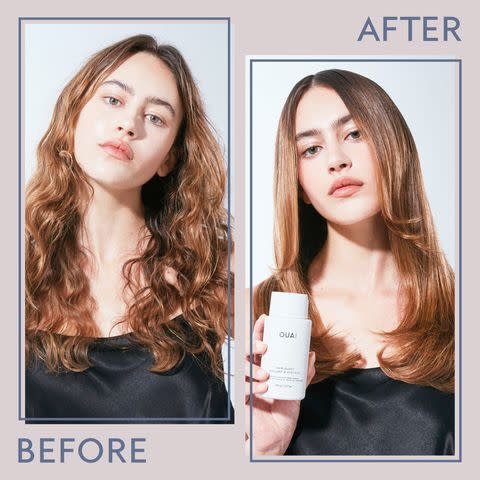
Ouai
Gloss on Straight Hair
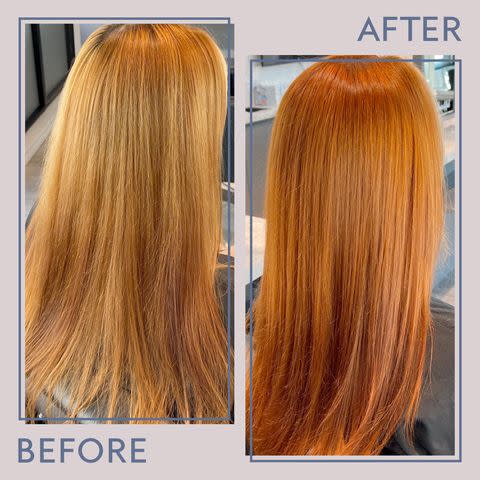
Madison Reed
Gloss on Coily Hair
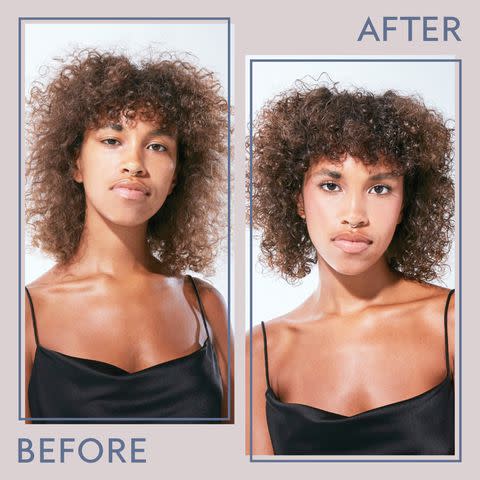
Ouai
Gloss on Straight Hair
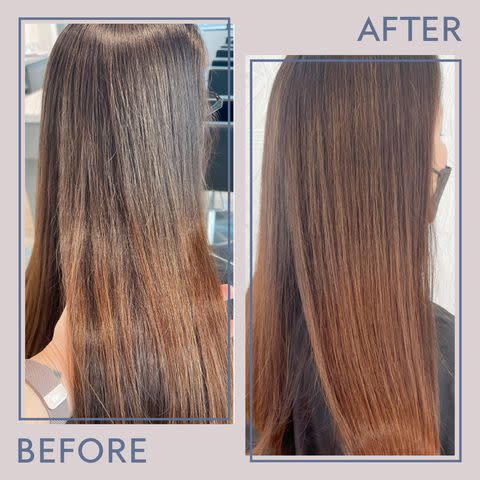
Madison Reed
Gloss on Wavy Hair
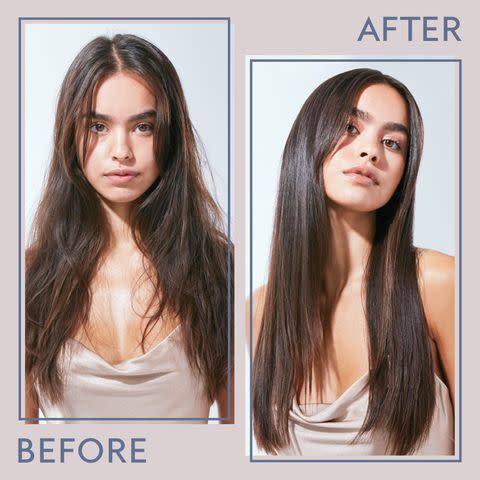
Ouai
Gloss on Straight Hair
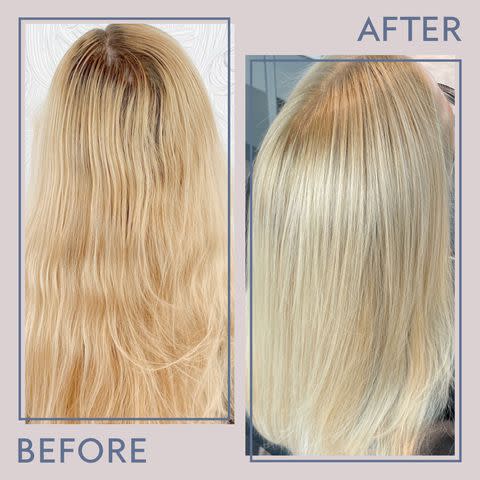
Madison Reed
Gloss on Wavy Hair
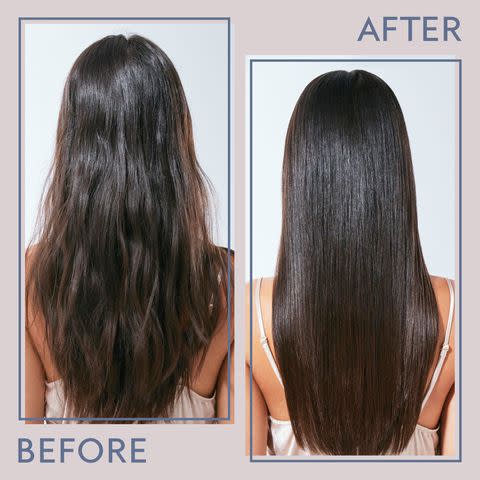
Ouai
Frequently Asked Questions
How much does hair glossing cost?
The cost of a hair gloss depends on the type that you get, as well as your specific geography. If you opt for an at-home hair gloss, Perkins says that you can expect to pay around $30 for a bottle or tube of gloss. If you choose to make an in-salon gloss appointment, Kandasamy says that it typically costs between $50 and $100 based on location, the salon you go to, and the colorist who applies it.
How long do the results last?
Store-bought hair glosses typically only last for six to eight shampoos since they don’t saturate the cuticle, while professional in-salon glosses can last upwards of six weeks.
How often should you gloss your hair?
Since a hair gloss typically lasts up to six weeks, Perkins says re-upping your in-salon treatment every five to six weeks is a good idea. “However, if you want to change up tones a little more often, feel free,” she encourages us. “Because gloss only coats the outside of the hair, you don’t need to worry about over-processing, darkening, or drying your hair.”
Can you gloss all hair textures?
According to Kandasamy, a hair gloss is a good idea for all hair types and textures. “A hair gloss seals the cuticle for enhanced shine, color vibrancy, and smoothness,” he says. “It's suitable for various hair types and can be beneficial for anyone looking to refresh their hair color, improve texture, and add a glossy finish.” The best part? “It’s a low-maintenance color service and is easy to maintain,” he says.
Who are hair glosses best for?
While all hair textures and types can work with a gloss, Perkins admits that the shine-enhancing, color-boosting treatments benefit color-treated hair the most. “Gloss is used to bring back dimension and tone to color-treated hair when it begins to fade,” she explains. “It’s not the best option for non-color-treated hair because the gloss pigment uses the porosity of the hair instead of a developer to deposit color. Because non-treated hair doesn’t typically have a ton of porosity, the results of gloss are not usually as obvious and don’t tend to last as long.”
For more InStyle news, make sure to sign up for our newsletter!
Read the original article on InStyle.

